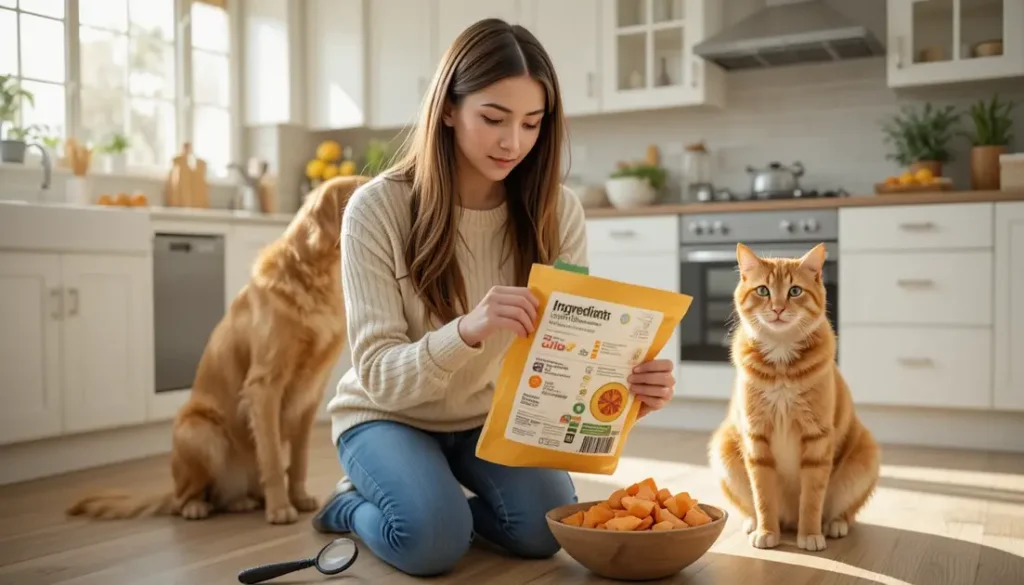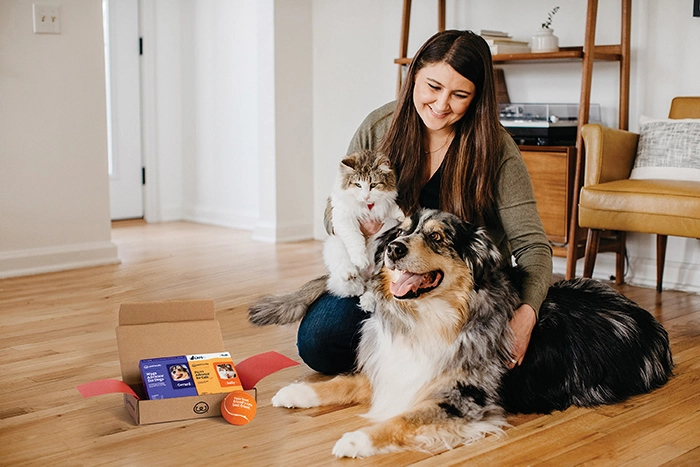Unsafe pet food ingredients include artificial preservatives like BHA and BHT, toxic sweeteners such as xylitol, low-quality fillers, and unnamed meat by-products. These additives can cause cancer, organ damage, allergies, and digestive issues in dogs and cats.
Learning to identify these harmful additives protects your pet’s long-term health. This guide breaks down exactly what to avoid and how to choose safer alternatives.
What Makes Pet Food Ingredients Unsafe?
Not every ingredient with a complicated name is dangerous, but certain additives and processing methods pose real risks to your pet’s health.
An unsafe ingredient typically falls into one of three categories: toxic substances that cause immediate or cumulative harm, nutritionally empty fillers that displace healthy nutrients, and poorly regulated by-products that may contain contaminants.
The problem often starts with manufacturing shortcuts. Many commercial pet foods prioritize shelf life and profit margins over nutritional quality.
This leads manufacturers to use chemical preservatives that extend product life but may shorten your pet’s. Other companies use vague labeling like “meat meal” to hide low-quality protein sources that could include diseased animal parts.
Understanding these categories helps you see beyond marketing claims and make informed decisions for your companion animal.
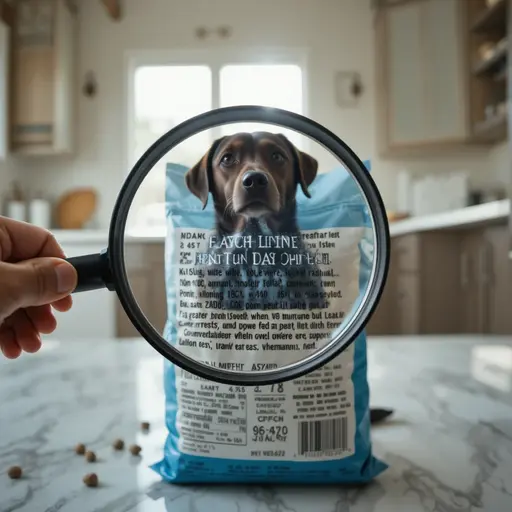
Top Unsafe Pet Food Ingredients to Avoid
Artificial Preservatives: BHA, BHT, and Ethoxyquin
BHA (butylated hydroxyanisole) and BHT (butylated hydroxytoluene) regularly appear in dry pet foods to prevent fat spoilage. The National Toxicology Program identifies BHA as “reasonably anticipated to be a human carcinogen,” and animal studies link both chemicals to tumor development.
Despite these warnings, the FDA still permits their use in small amounts, but pets eating the same food daily accumulate these chemicals over time.
Ethoxyquin, originally developed as a rubber stabilizer, raises even more concerns. It appears in fish meals and some “preservative-free” foods because manufacturers add it before the ingredient reaches the production facility.
This loophole means it never appears on the final label. The FDA has received numerous reports linking ethoxyquin to liver damage, allergic reactions, and immune disorders in dogs.
Practical Tip: Look for foods preserved with natural alternatives like mixed tocopherols (vitamin E), rosemary extract, or ascorbic acid (vitamin C). These keep food fresh without the cancer risk.
Airtight storage containers also help preserve freshness after opening, reducing the need for harsh chemical preservatives in the first place.
Artificial Colors and Flavors
That bright red kibble shaped like little steaks contains dyes your pet simply doesn’t need. Blue 2, Red 40, and Yellow 5 and 6 appear frequently in pet foods to appeal to human buyers, but animals don’t care about color.
These synthetic dyes have documented links to hyperactivity, allergic reactions, and cancer in laboratory animals. Some studies suggest they may also contribute to behavioral issues in sensitive pets.
Artificial flavors mask poor ingredient quality. When a food contains little real meat, manufacturers add chemical flavor enhancers to make it palatable.
These compounds trick your pet into eating subpar nutrition while potentially causing digestive upset or food sensitivities.
What to Do Instead: Choose foods with uniform, natural colors that reflect real ingredients. High-quality salmon-based foods will have a natural pinkish hue, while chicken-based foods appear tan or brown. Your pet’s nose knows the difference—trust their senses over artificial enhancements.
Low-Quality Fillers: Corn, Wheat, and Soy
While not inherently toxic, these ingredients become problematic when used as primary protein sources. Many budget pet foods list corn or wheat as the first ingredient, meaning your carnivorous pet is eating mostly carbohydrates. This nutritional mismatch contributes to obesity, diabetes, and inflammatory conditions.
Corn particularly concerns experts because of mycotoxin contamination risks. Moldy corn can contain aflatoxins, which cause severe liver damage and have been linked to numerous pet food recalls.
Wheat and soy rank among the top allergens for dogs, frequently causing itchy skin, ear infections, and digestive distress.
The “whole grain” argument doesn’t apply to pets the same way it does to humans. Dogs have no biological requirement for carbohydrates, and cats are obligate carnivores who thrive on minimal plant matter. When these fillers dominate an ingredient list, they displace the quality animal protein your pet actually needs.
Better Options: Look for grain-free recipes using sweet potatoes or peas as binders, or choose foods with whole grains listed far down the ingredient list after multiple named meat sources.
Brands that specifically source non-GMO, USA-grown grains reduce contamination risks significantly.
Unspecified Meat By-Products and Meals
“Meat meal” sounds protein-rich, but this vague term legally allows manufacturers to include animals that died from disease, disabled livestock, and even euthanized pets from shelters.
The rendering process destroys harmful bacteria but also eliminates many nutrients, leaving a concentrated but questionable protein source.
Named by-products like “chicken by-products” tell you the animal source but still include feet, beaks, undeveloped eggs, and organs—some nutritious, some just filler. The quality varies dramatically between batches and suppliers.
Reading Labels Correctly: Always choose foods specifying the protein source: “deboned chicken,” “turkey meal,” or “wild-caught salmon.”
Avoid any food with generic “meat,” “animal,” or “poultry” ingredients. Reputable brands list exact percentages of key ingredients, giving you transparency about what your pet actually eats.
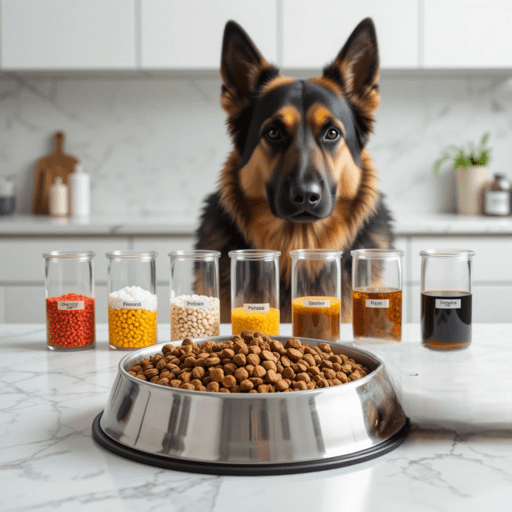
Dangerous Sweeteners: Xylitol and Others
Xylitol, a sugar alcohol found in sugar-free gum and some peanut butters, causes rapid insulin release in dogs, leading to hypoglycemia, seizures, and liver failure.
Even small amounts can kill a medium-sized dog within hours. While rare in dog food, xylitol increasingly appears in “low-calorie” treats and dental chews.
Other unnecessary sweeteners like corn syrup, sucrose, and fructose contribute to pet obesity and dental disease. Cats can’t even taste sweetness, making these additives purely marketing gimmicks that harm feline health.
Safety First: Never give pets sugar-free human foods without checking for xylitol. Store human toothpaste, medications, and baked goods far from curious noses.
For treats, choose single-ingredient options like freeze-dried liver or fresh vegetables that provide natural flavors without processed sugars.
Rendered Fats and Oils
“Animal fat” as a generic ingredient often comes from rendered restaurant grease and rancid cooking oils. This low-quality fat source may contain high levels of harmful free radicals and toxins accumulated during repeated heating.
The rendering process concentrates heavy metals and other contaminants, which then enter your pet’s body.
Fish oils provide beneficial omega-3s, but generic “fish oil” from unspecified sources risks mercury contamination and oxidation. Rancid fish oil creates more health problems than benefits, promoting inflammation rather than reducing it.
Healthier Fat Sources: Look for foods listing specific fats like “chicken fat (preserved with mixed tocopherols)” or “wild Alaskan salmon oil.”
Fresh, properly stored fats support coat health and brain function without the toxin load of rendered mystery fats. Consider adding a separate, refrigerated omega-3 supplement from a trusted brand to ensure freshness.

How to Spot Unsafe Ingredients on Pet Food Labels
Pet food packaging confuses consumers on purpose. Learning to read labels quickly separates quality foods from harmful ones.
The First Five Ingredients Rule: Ingredients appear in descending order by weight before cooking. If any unsafe pet food ingredients appear in the first five spots, the food contains substantial amounts. Quality foods list a named meat or meat meal first, followed by other identifiable ingredients.
Splitting Tricks: Manufacturers split similar ingredients to push them down the list. “Ground corn,” “corn gluten meal,” and “corn flour” could each appear separately but collectively make corn the main ingredient. The same applies to wheat and soy fractions.
“Dinner,” “Formula,” and “Recipe” Laws: Products named “Chicken Dinner for Dogs” only need to contain 25% chicken. “With Chicken” requires just 3%. Only foods labeled “Chicken for Dogs” must contain 95% chicken. These legal distinctions let brands appear meat-rich while using minimal actual meat.
Misleading Marketing Terms: “Natural,” “holistic,” and “premium” have no legal definition in pet food. “Human-grade” only applies if the manufacturing facility meets human food production standards, which few do. Focus on ingredient lists, not front-of-package claims.
Practical Tool: Use the AAFCO (Association of American Feed Control Officials) statement to check if food meets basic nutrition standards, but remember this doesn’t address ingredient quality or safety—only nutritional completeness.
The Science Behind the Warnings
Research increasingly connects chronic health issues to dietary contaminants. A 2021 study published in Environmental Science & Technology found PFAS (per- and polyfluoroalkyl substances) in pet food bags, with chemicals leaching into the food itself.
These “forever chemicals” accumulate in pets’ bodies faster than in humans’, potentially causing immune dysfunction and cancer.
Veterinary nutritionists at UC Davis have documented links between certain preservatives and liver enzyme elevations in dogs fed consistent commercial diets.
The elevations reversed when pets switched to naturally preserved foods, suggesting direct organ stress from chemical additives.
Long-term feeding studies show that dogs on high-fiber diets develop inflammatory markers similar to those seen in human metabolic syndrome. This chronic inflammation contributes to arthritis, cognitive decline, and organ failure in aging pets.
Regulatory Gaps Pet Owners Should Know
The FDA regulates pet food under the same standards as animal feed, not human food. This lower bar allows ingredients condemned for human consumption to legally enter pet food through rendering.
While the FDA requires “all foods be safe to eat, produced under sanitary conditions, contain no harmful substances, and be truthfully labeled,” enforcement remains limited.
AAFCO establishes nutritional guidelines but has no regulatory authority. They don’t approve or certify pet foods, contrary to popular belief.
Their guidelines address nutrient levels but not ingredient sourcing, processing methods, or long-term safety testing.
The Rendering Plant Problem: Rendered ingredients come from facilities that process dead animals, slaughterhouse waste, and expired grocery meats. While the high-heat process kills pathogens, it doesn’t remove toxins, heavy metals, or drug residues from euthanized animals.
The FDA has found pentobarbital (euthanasia drug) residues in some commercial pet foods, likely from rendered companion animals.
Foreign Ingredient Risks: Imported ingredients face minimal inspection. Glycerin from China used in treats has been linked to thousands of pet deaths from kidney failure.
Vitamin and mineral premixes from overseas suppliers sometimes contain incorrect amounts or toxic contaminants, leading to recalls.
What This Means for You: Don’t assume regulatory oversight protects your pet. Become your own quality control by choosing brands that manufacture in their own facilities, source ingredients from trusted suppliers, and conduct regular third-party testing for contaminants.
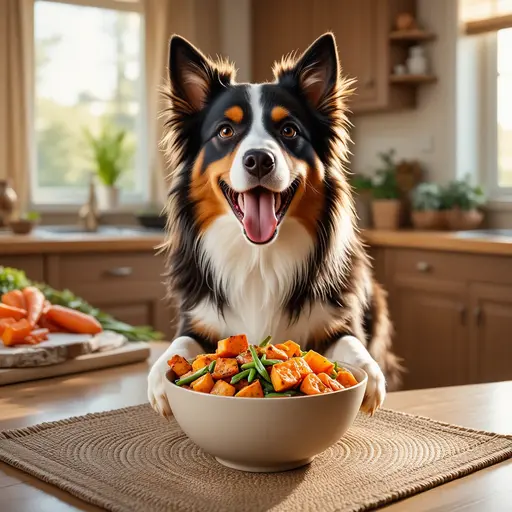
Safer Alternatives: What to Look For Instead
Whole, Named Protein Sources
Choose foods listing specific meats as the first ingredient: “deboned turkey,” “duck meal,” or “whole herring.” A meal isn’t inferior if it’s named—the rendering process actually concentrates protein by removing water. “Chicken meal” can contain 300% more protein than fresh chicken by weight.
Natural Preservation Methods
Mixed tocopherols (vitamin E) and rosemary extract effectively preserve fats without health risks. These cost more than synthetic preservatives, so their presence indicates a manufacturer prioritizing safety.
Some brands use gentle pressure-cooking (retort) or freeze-drying to eliminate bacteria without preservatives entirely.
Functional Carbohydrates
If the food contains carbs, look for digestible options like sweet potatoes, pumpkin, or chickpeas. These provide fiber, vitamins, and steady energy without the allergy risks of wheat and corn.
Grain-free isn’t necessary for every pet, but the grains should be whole, non-GMO, and minimal in the formula.
Transparent Sourcing
Quality brands share their supply chain. They name specific farms, fisheries, or regions where ingredients originate. Some include lot numbers on bags that let you trace ingredients back to their source online. This transparency costs more but virtually eliminates the mystery meat problem.
Expert Tips for Choosing Safe Pet Food
1. Rotate Protein Sources: Feeding the same protein for years increases allergy risk. Rotate between three or four quality foods with different primary proteins every few months. This variety reduces exposure to any single contaminant source and provides a broader nutrient profile.
2. Check Recall Databases: Before buying a brand, search the FDA pet food recall database for its history. One recall doesn’t condemn a company—mistakes happen—but multiple recalls for serious issues like salmonella or elevated vitamin D suggest systemic quality control problems.
3. Call the Manufacturer: Reputable companies employ veterinary nutritionists and customer service teams who can answer specific questions. Ask: “Where are your ingredients sourced?” “Do you conduct third-party testing?” “What are your quality control measures?” Vague answers or unwillingness to share information is a red flag.
4. Consider Fresh or Lightly Cooked Options: Fresh pet food services that use human-grade ingredients in USDA-inspected kitchens eliminate many contamination risks. While more expensive, these foods often resolve chronic health issues, potentially reducing future vet bills. Even mixing a small amount with quality kibble improves overall nutrition.
5. Monitor Your Pet: The best test is your pet’s condition. After switching to a safer food, watch for shinier coats, smaller stools (better digestion), increased energy, and reduced scratching. These changes typically appear within 4-6 weeks and confirm you’ve eliminated problematic ingredients.
FAQs About Unsafe Pet Food Ingredients
Are all by-products unsafe pet food ingredients?
Not necessarily. Named organ meats like “beef liver” or “chicken hearts” provide excellent nutrition—iron, B vitamins, and taurine. The danger lies in unspecified “meat by-products” where you can’t identify the source or quality. Reputable brands specify which organs they include and why.
My pet has eaten food with these ingredients for years and seems fine. Should I still switch?
Yes. Many effects are cumulative and appear later in life. A pet may seem healthy while developing inflammatory conditions, early organ stress, or cancer risk. Switching to safer ingredients now can halt progression and often reverse subclinical damage, improving energy and vitality even in senior pets.
Is grain-free always safer?
Not automatically. Some grain-free foods replace corn with unsafe pet food ingredients like peas and potatoes in excessive amounts, which the FDA is investigating for potential heart disease links. The key is balance and quality. Whether grain-free or not, the food should contain primarily named animal proteins with modest amounts of quality carbs.
How can I afford premium pet food on a budget?
Focus on foods without the most dangerous additives first. Even mid-priced brands now offer lines without BHA/BHT or artificial colors. Buy larger bags to reduce cost per pound, use autoship discounts, and supplement with healthy homemade additions like scrambled eggs or cooked chicken to stretch quality kibble further.
Do veterinarians know about these unsafe ingredients?
Most veterinarians receive limited nutrition training, often sponsored by major pet food companies. However, holistic and integrative vets typically stay current on ingredient research. Consult a vet specializing in nutrition if you have concerns, and always be prepared to discuss specific ingredients rather than just brands.
Conclusion
Unsafe pet food ingredients hide in plain sight on most labels, but now you know exactly what to avoid. The most dangerous culprits—artificial preservatives, toxic sweeteners like xylitol, and unspecified meat by-products—offer no nutritional benefit while actively harming your pet’s health over time.
By choosing foods with named protein sources, natural preservation methods, and transparent sourcing, you eliminate 90% of the risk.
Remember that regulatory agencies set minimum standards, not optimal health guidelines. Your pet depends on you to be their quality control department.
The extra few minutes spent reading labels and researching brands translates into years of better health, fewer vet visits, and a more vibrant life for your companion.
Start today by checking your current pet food against the unsafe ingredient list in this guide. If you spot red flags, transition gradually to a safer option over 7-10 days to avoid digestive upset. Your pet’s improved energy, shinier coat, and better health will confirm that you made the right choice.





